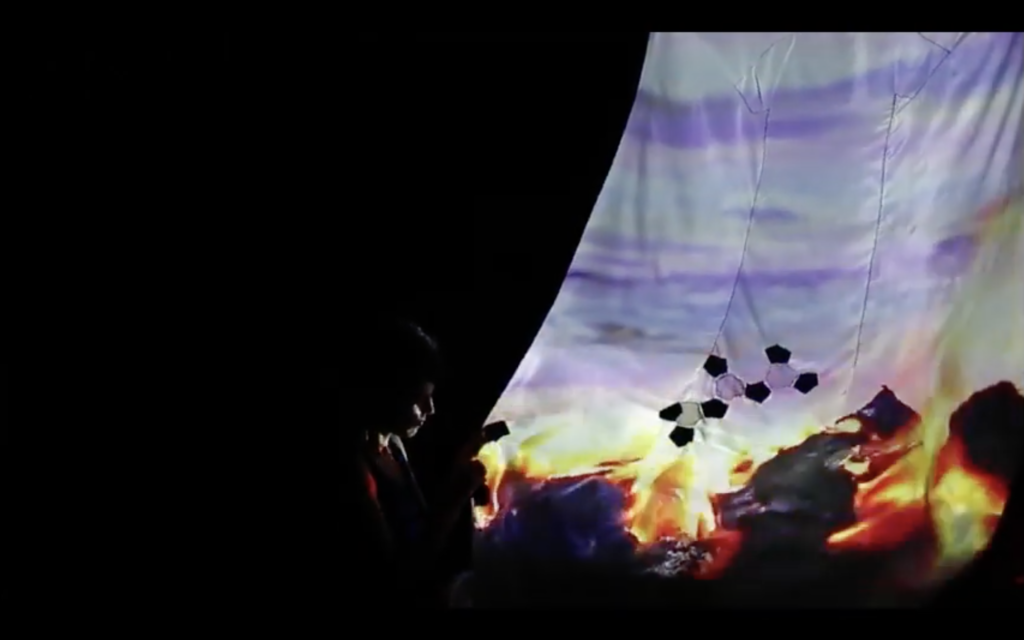
“Blue Girl” is a performance and video installation created in collaboration with Soha Zandi, focusing on the heartbreaking story of Sahar Khodayari, a young Iranian woman whose fight for freedom ended in self-immolation. Known as the “Blue Girl” for her unwavering support of Esteghlal F.C.—a national football team represented by the color blue—Sahar became a symbol of resistance against the oppressive restrictions faced by women in the Islamic Republic of Iran. In September 2019, Sahar, in an attempt to watch her favorite team’s match, disguised herself as a man to enter Azadi Stadium in Tehran. She was arrested for appearing in public without a hijab. Upon learning she could face a six-month prison sentence, she set herself on fire in front of the Islamic Revolutionary Court. Her death marked a powerful and tragic protest against systemic gender discrimination in Iran. Through Blue Girl, the artists seek to honour Sahar’s memory and highlight the injustices she faced. The burning ball in the film represents her burning desire to watch a football game of her favorite team. The sound of the football burning, contrasted with the cheers of male spectators applauding their team in the stadium, creates a haunting and emotional juxtaposition, emphasizing the gender disparity in access to public spaces in Iran. The piece features a white fabric onto which the artist sewed the outline of a dress, symbolizing Sahar’s life, which also serves as a projection screen. The film, created by the artist and Soha Zandi, is projected onto this fabric, allowing the flames from the burning football in the film to align with pentagon-shaped patterns sewn onto the dress. These pentagons, reminiscent of a football, merge with the outline of Sahar’s dress, creating a visual connection between her passion for the sport and the tragic events that followed. During the performance, the artist sits beside the screen, sewing these pieces of black and white fabric in pentagon shapes that resemble football patterns onto the white fabric. These sewn shapes are incorporated into the dress outline, blending Sahar’s unfulfilled dreams with the harsh reality of her oppression. The act of sewing in the performance represents the artist’s attempt to heal the wounds of injustice. Each stitch serves as a gesture of care and restoration, symbolizing the desire to mend the deep scars left by systemic oppression. By sewing the pentagon shapes into the outline of Sahar’s dress, the artist is not only weaving together pieces of fabric but also engaging in a symbolic act of healing—an effort to repair the damage caused by gender inequality in her country. In this way, the sewing becomes an intimate and meditative process, one that reflects the artist’s commitment to honouring Sahar’s memory while addressing the broader issue of women’s rights. It speaks to the resilience and strength of women like Sahar, whose stories deserve to be remembered and whose struggles continue to inspire the fight for justice. To watch the video of the performance click here.